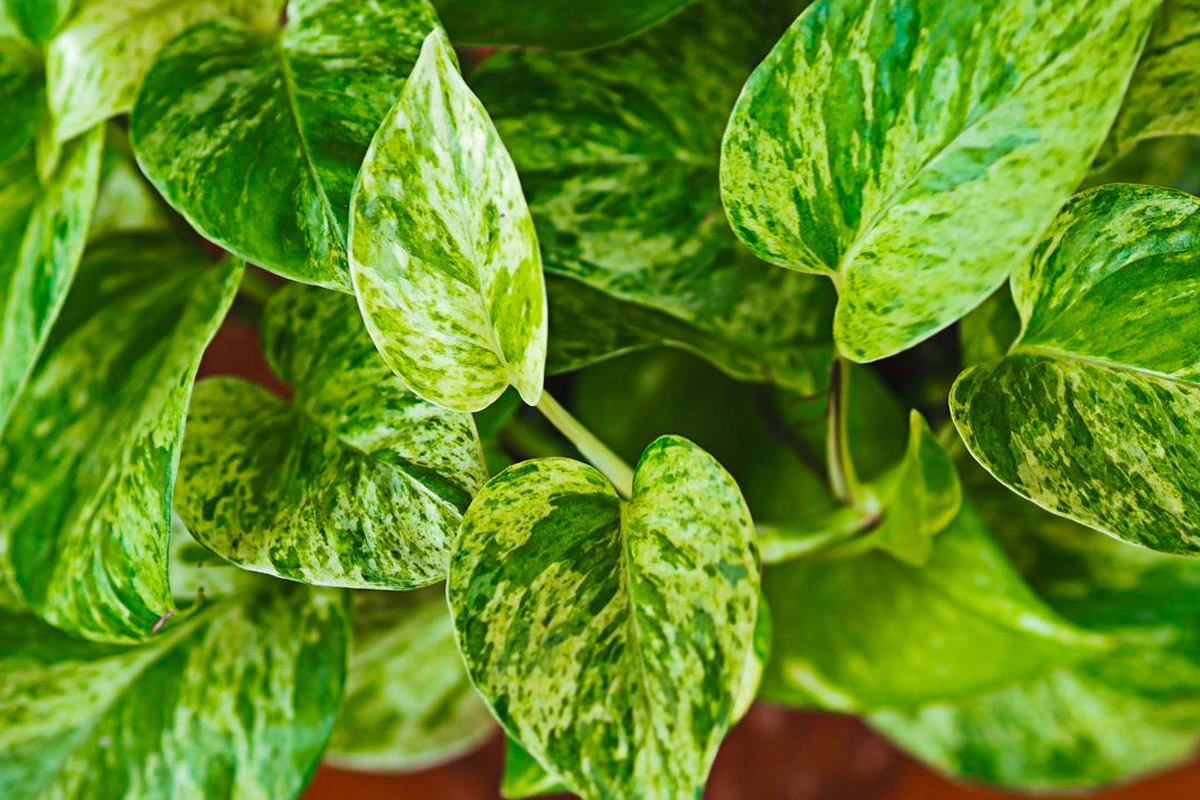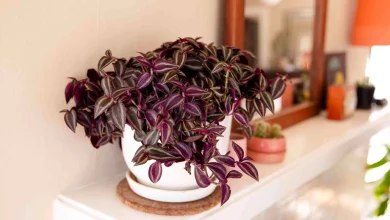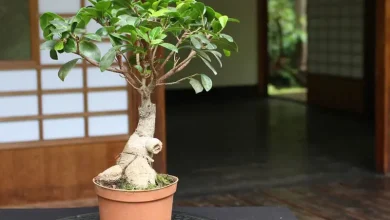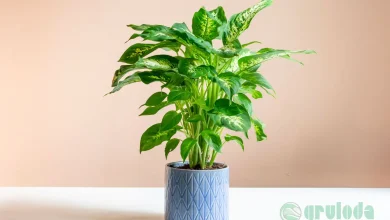Devil’s Ivy Care: How to Grow Gorgeous Pothos Houseplants
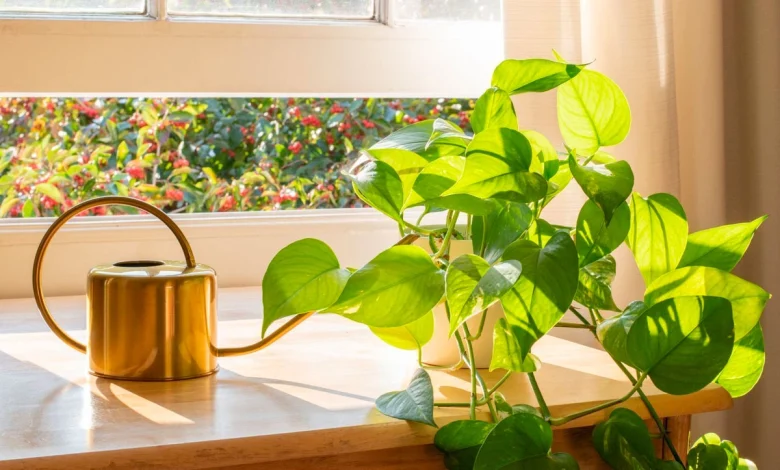
Devil’s Ivy
With its trailing vines and easygoing nature, it’s no wonder Devil’s Ivy remains such a popular houseplant. This stunning yet hardy specimen thrives with minimal care, adding cascades of leafy beauty to any space. Let’s explore how to keep your Epipremnum aureum, also called Pothos or Golden Pothos, growing strong and looking its best!
Overview of Epipremnum Aureum
Devil’s Ivy goes by many names – it’s botanically known as Epipremnum aureum but is also frequently called Pothos, Golden Pothos, or Money Plant. This vining aroid is native to the tropical forests of Southeast Asia. With its heart-shaped satiny leaves splashed with yellow variegation, it’s easy to see why this plant has been a houseplant favorite since the 1800s!
Read on: Philodendron Micans Care
Under the right conditions indoors, Devil’s Ivy can grow quite large, easily reaching 10 feet or more in length! But regular pruning keeps it a more manageable size. Allowed to trail from hanging baskets or climb up supports, Epipremnum aureum adds incredible fullness and a bold tropical statement wherever grown.
Natural Origins & Habitat
Native to the humid jungles of Southeast Asia, Devil’s Ivy naturally grows up tree trunks and branches as an epiphyte. It’s accustomed to sultry conditions with dappled sunlight and very high moisture. Replicating some of these factors helps keep your Pothos thriving as a houseplant.
Growing Conditions
Devil’s Ivy adapts readily to life as a houseplant but still has preferences for optimal growth. Pay attention to its needs for light, temperature, humidity and soil moisture.
Light Requirements
Devil’s Ivy does well in a wide range of light levels, from full sun to semi-shade. But ideally provide bright, indirect light for fullest growth. Some morning or late day sun is beneficial. Too little light equals slower growth and less vibrant variegation.
Temperature & Humidity
Daytime temps of 70-85°F and 60-75°F at night suit Devil’s Ivy well. Average indoor humidity around 40-50% is fine. Allow soil to dry somewhat between waterings, as wet feet can lead to root rot in cool temps.
Soil Needs
Use a well-draining potting mix with peat moss or compost. Soil should retain some moisture but drain excess water. Adding bark, perlite or orchid mix improves drainage. Proper soil prevents overly wet roots.
Watering Frequency
Water whenever the top few inches of soil become dry. Water thoroughly until it drains from the pot’s bottom, then do not water again until the top of the soil becomes dry once more. Take care not to over-water.
Devils ivy care
A few simple maintenance practices will keep your Epipremnum aureum vibrant and lovely as it enhances your indoor space with its trailing vines:
Pruning & Training Devil’s Ivy
Prune back long vines or remove damaged leaves to promote full, bushy new growth. Train vines up a support or allow them to trail attractively. Prune to keep growth contained.
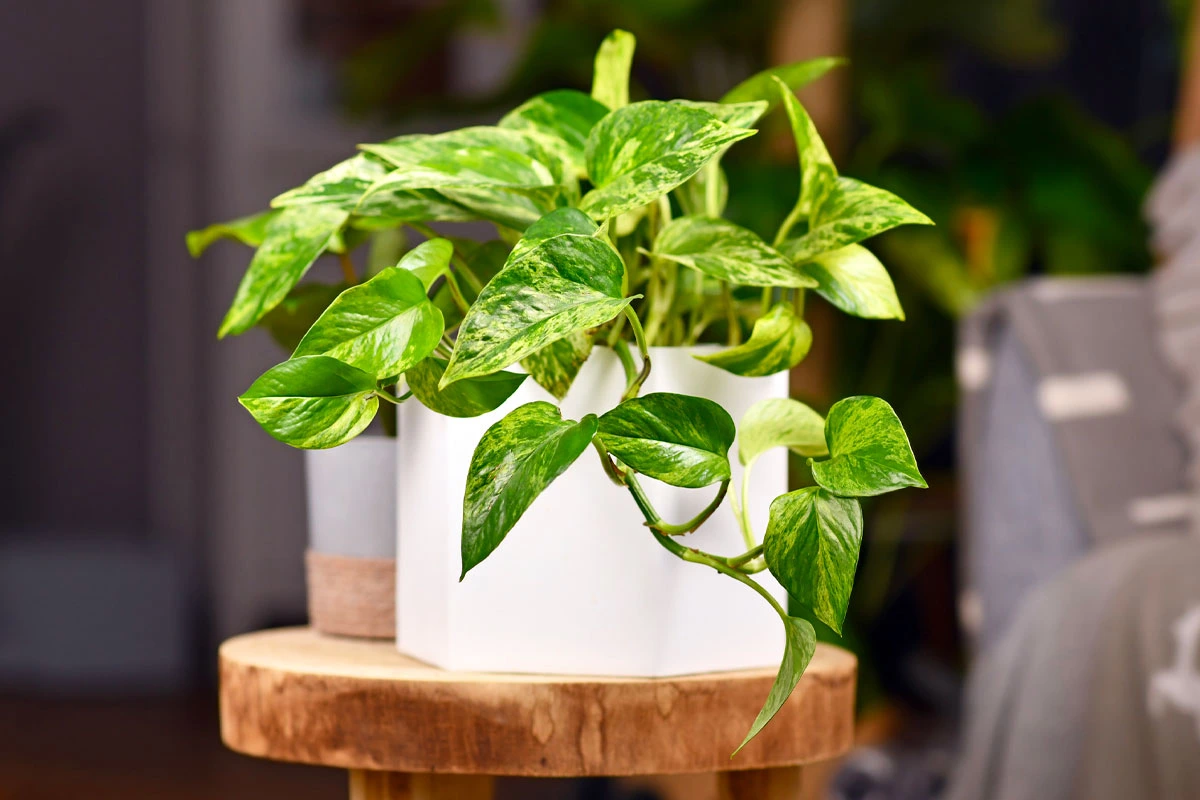
Fertilizing Devil’s Ivy
Using a diluted liquid fertilizer once a month in spring and summer will promote healthy growth. Reduce feeding in fall and winter months. Take care to avoid fertilizer burn.
Repotting Devil’s Ivy
Repot in spring every other year as needed in a slightly larger container using fresh houseplant soil. This gives the fast-growing roots more room. Handle vines gently when repotting to avoid damage.
Propagating New Plants
Devil’s Ivy propagates readily from stem tip cuttings rooted in water or potting mix. Take a cutting with a few leaves, remove the lower leaves, and place the cut end in water or potting mix. Roots will sprout in a few weeks, allowing you to pot up new baby Pothos plants easily!
Troubleshooting Common Issues of Devil’s Ivy
Despite being quite hardy, Devil’s Ivy may sometimes show signs of distress. Watch for these potential problems:
Yellowing Leaves
Overwatering and poor drainage often cause yellow, drooping leaves. Allow soil to dry out further between waterings. Root rot may require treating with a fungicide.
Wilting, Drooping Leaves
Leaves that are wilting or drooping indicate the plant needs more water. Give it a thorough soaking to hydrate the plant. Ensure adequate humidity as well.
Leaf Spot Diseases
Bacterial or fungal leaf spot shows up as unsightly marks on the foliage. Improve air circulation, water less, and use a fungicide if needed to clear up the issue.
Leggy Growth
If your Pothos becomes sparse and leggy, increase light exposure and use fertilizer to encourage fuller growth. Prune back wayward vines to redirect energy.

More Devils Ivy Care Tips for Lush Growth
Caring for Devil’s Ivy (Epipremnum aureum) is generally quite straightforward. But a few extra tips can help take your Pothos growth to the next level! Here are some additional pointers for getting your Epipremnum aureum to reach its full lush and trailing potential:
Choose the Right Devil’s Ivy Variety
There are many different Pothos cultivars to choose from, each with their own unique leaf variegation and growth habits. Popular options include:
- Golden Pothos – green and yellow leaves
- Marble Queen – white and green variegation
- Neon Pothos – vibrant neon green
- Pearls and Jade – smaller white speckled leaves
Consider your space and the look you hope to achieve. All feature similar vining growth and care needs.
Use the Right Support for Climbing Vines
Do you want your Devil’s Ivy to climb up a vertical support? The type of support structure you provide makes a difference.
- Trellises and screens provide horizontal climbing.
- Totem poles and moss poles allow vertical vine growth.
- Use soft plant ties to gently secure wandering stems in place.
- Ensure the support is sturdy enough to hold mature climbing vines.
Increase Humidity for Lush Tropical Growth
Devil’s Ivy thrives in humid tropical environments. Increasing moisture in the air benefits your Epipremnum aureum in any home:
- Run a humidifier near your Pothos.
- Set its pot on a pebble tray filled with water.
- Mist the leaves every few days to increase local humidity.
- Grow in a naturally humid bathroom if possible.
Higher humidity equals fuller, healthier leaves!
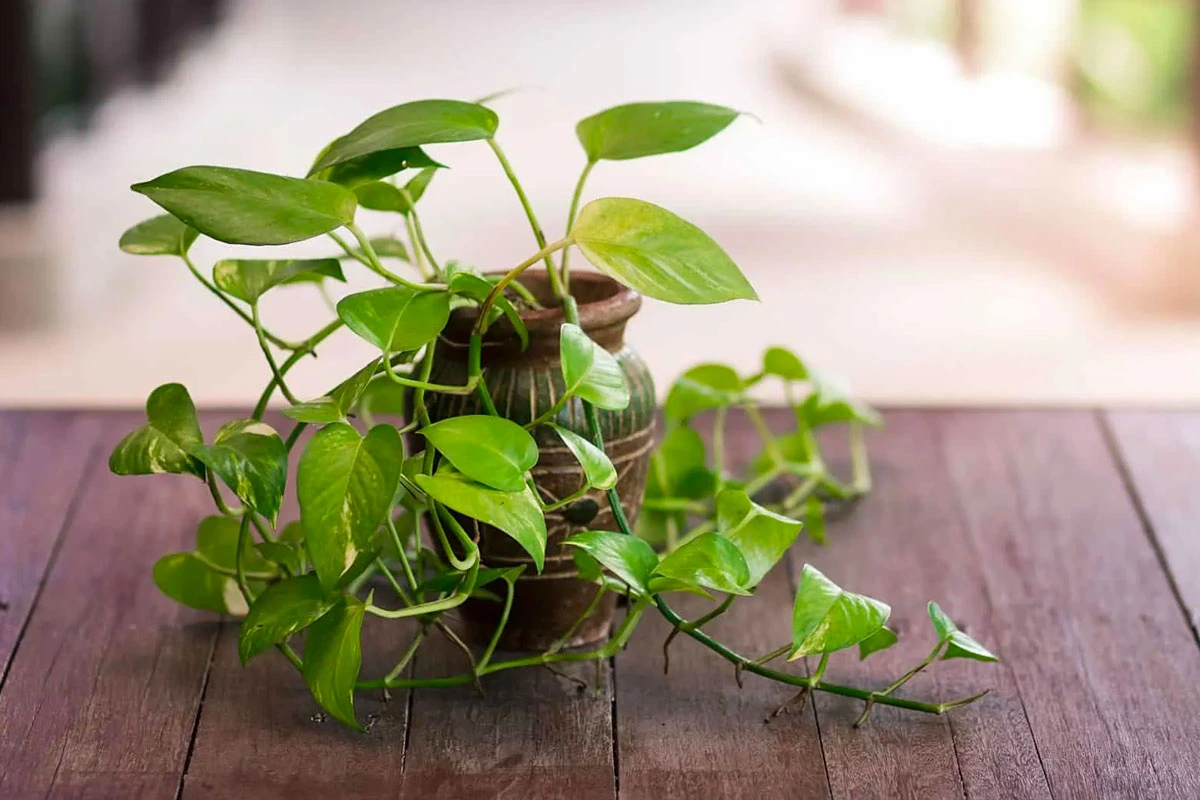
Add Organic Matter to the Soil
While Devil’s Ivy isn’t too picky about soil, adding some organic matter helps retain moisture and nutrients. Try:
- Mixing in compost or worm castings
- Top dressing with organic mulch
- Adding slow release fertilizer to the potting mix
This improves moisture retention and provides a gentle fertilization boost!
Rotate Pots to Encourage Even Growth
It’s easy for any houseplant to grow towards the light source, ending up lopsided. Prevent leggy Devil’s Ivy growth by:
- Turning the pot frequently to expose all sides.
- Rotating vertical climbing vines as they grow upwards.
- Pruning back any overly long stems to redistribute growth.
With just a few extra Devil’s Ivy care tips, you can maximize growth and enjoy this easygoing vine even more! A bit of extra attention goes a long way.

Growing Devil’s Ivy in water
Devil’s Ivy, also known by names like Pothos and Golden Pothos, can easily be grown in water as a unique houseplant. Here are some tips for cultivating your Epipremnum aureum successfully as a hydroculture plant:
- Start by taking a 6-8 inch stem cutting from a mature Devil’s Ivy plant. Remove all leaves except for 2-3 at the top.
- Place the cutting’s bottom end into a vase or glass container filled with room temperature water.
- Top off water as needed to keep the water level high enough to submerge the bottom 1-2 inches of the cutting. Use filtered or distilled water for best results.
- Place the cutting in a bright, indirect light location. Some direct morning sun is beneficial. Avoid intense southern sun exposure.
- Change the water every 1-2 weeks to prevent rot. Rinse the container each time to remove sediment.
- Add liquid fertilizer to the water once a month during spring and summer for healthy growth. Avoid over-fertilizing.
- Once roots several inches long emerge from the cutting after a few weeks, the new hydroculture Devil’s Ivy is ready for display!
- Monitor water levels frequently. Top off when needed to keep roots fully submerged. Add pebbles to anchor the cutting.
- Prune and train the trailing vines as desired. Vines left untrimmed will rapidly reach 10 feet long!
Growing Devil’s Ivy in water is an easy, fun way to enjoy this gorgeous vining plant. The vines and leaves will thrive hydroponically with bright light and good hydration. Let those trailing tendrils cascade from counters, shelves, or hanging displays!
Transitioning Water-Grown Devil’s Ivy to Soil
If you eventually want to plant your water-rooted Devil’s Ivy in potting soil, the process is easy.
- Wait until the water-rooted cutting has several vigorous vines and an extensive root system before transitioning it to soil.
- Select a container slightly larger than the root mass and fill with a well-draining potting mix.
- Gently loosen the roots and place into the container, filling in soil around the base.
- Water thoroughly once planted to help settle the soil. Allow excess water to drain fully.
- Move the newly potted plant to a bright location and resume normal Devil’s Ivy care. Reduce watering frequency since it is no longer in water.
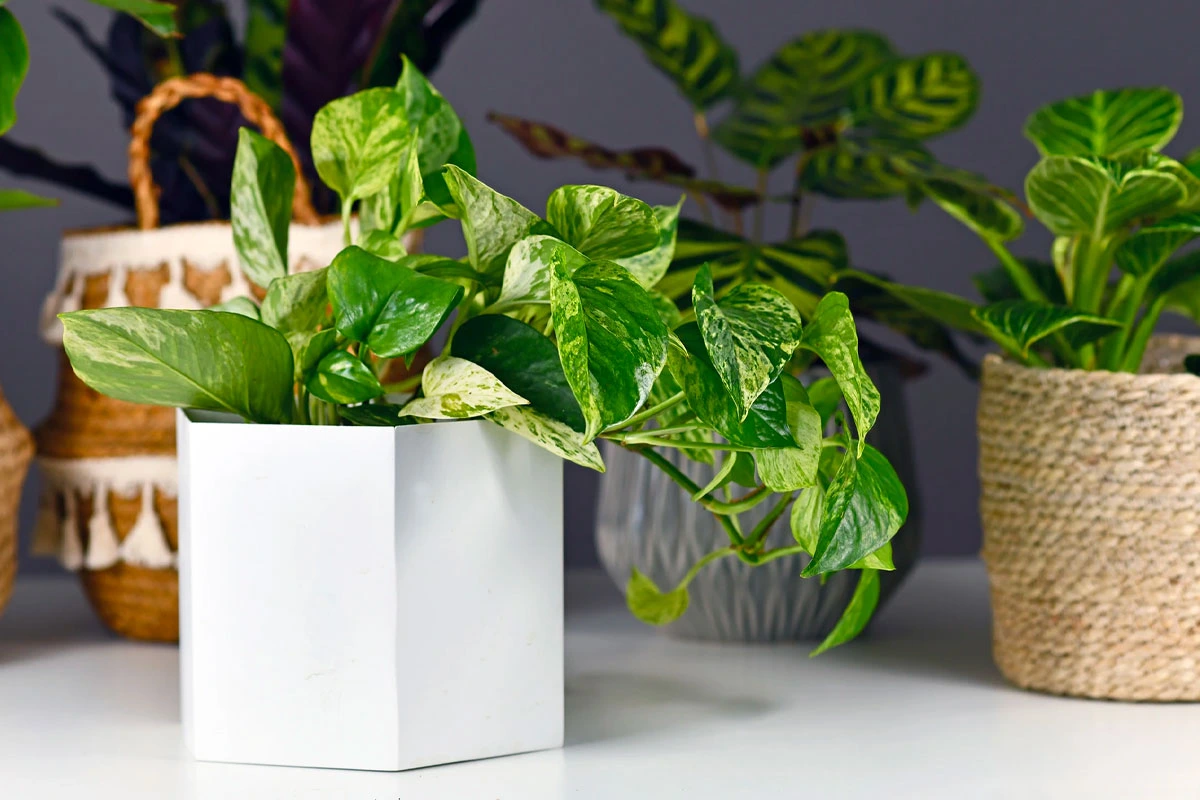
Frequently Asked Questions for Devil’s Ivy Care
How much light does a Pothos or Devil’s Ivy need?
Devil’s Ivy grows well in bright indirect light. Some direct morning or evening sun is beneficial but avoid intense midday sun which can scorch leaves. Low light slows growth.
What causes yellow leaves on my Pothos?
Overwatering that leads to soggy soil and root rot is the most common reason for yellowing Pothos leaves. Allow the soil to dry out further between waterings. Remove affected leaves promptly.
Why is my Devil’s Ivy plant getting leggy and sparse?
Insufficient light exposure causes leggy, sparse growth. Place the plant closer to a bright window or supplement with a grow light. Fertilize regularly in spring and summer for lush full growth.
How do I prune and shape my Pothos houseplant?
Prune back long vines just above a leaf node to encourage bushy regrowth. Remove any dead or damaged leaves. Train vines up a post or trellis or allow them to spill from hanging baskets or shelves.
How often should I water my Pothos or Devil’s Ivy plant?
Water thoroughly whenever the top few inches of soil become dry. Always check soil moisture before watering again. Take care not to over-water, as soggy soil leads to root rot and yellow leaves.
How cold tolerant is Epipremnum aureum?
Devil’s Ivy prefers warm temperatures above 60°F. It can tolerate cooler temps near 50°F but avoid prolonged cold exposure, which causes leaf drop.
How can I encourage new growth in my Pothos?
Fertilizing regularly in the spring and summer provides nutrients for new growth. Ensure adequate brighter light exposure as well. Prune back leggy vines to stimulate bushier regrowth.
What are signs my Pothos needs to be repotted?
Indicators your Epipremnum aureum needs more space include roots growing from drainage holes, stunted growth, or toppling over from becoming top heavy. Move it to a slightly larger pot.
Can I grow Devil’s Ivy in an office with fluorescent lights?
Yes! Fluorescent overhead lights are bright enough for Pothos vines to grow well. Place desks and cubicles a few feet from light sources for best results. Northern or eastern exposure is ideal.
Let me know if you need any other Devil’s Ivy growing tips! Proper Pothos care keeps this graceful vine healthy and thriving.



